Philippines' bloody war on drugs: Four charts reveal President Duterte's unprecedented purge
More than 3,500 have been killed in the country's war on drugs since the new administration took office in May.
Since Rodrigo Duterte won the Philippines presidential election in May, campaigning on a platform of zero tolerance against drug pushers and addicts, at least 3,800 individuals have been the victim of extrajudicial police and vigilante killings.
Amid the impunity of Duterte's drug war, officials have accepted at face value the accusation that all those caught up in the drug war have been involved in the production, sale and consumption of drugs. However, it is alleged that under the cover of killings, criminals and police officers have settled old scores with those who may have nothing to do with the narcotics trade.
The data used in the following maps and visualisations, compiled by the private Filipino television news channel ABS-CBN and obtained by IBTimes UK, gives an overview of those killings using information reported in the country's local press and by the Philippines National Police.
Number of weekly deaths in the Philippines since May 2016
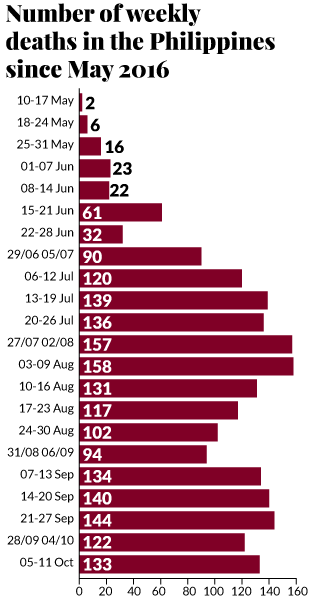
The data also tracks the vicious pace of Duterte's war on drugs. The president had initially said he would need just six months to eradicate the Philippines narcotics trade and the addicts feeding it. He said that the bay of Manila would be filled with bodies.
More recently, Duterte said he will need more time to complete the job which, in one of his most outlandish statements, he has compared to the Nazi Holocaust. Regardless of the rhetoric, a dramatic spike in the drug war can be seen eight weeks after it started, with deaths after that point never dropping lower than 90 per week.
Philippines drug war: A nationwide killing spree (From 11 May to 11 October 2016)

Total number of
victims reported:
2,076
Manila:
414
Quezon:
273
Bulacan:
181
Cebu:
174
A map showing the concentration of deaths in the war on drugs shows almost no area of the Philippines has been left untouched by the violence. The epicentre of the killings has been in the National Capital Region, which includes the capital city of Manila, and nearby the nation's most populous city of Quezon and the city of Bulacan. However, it is clear that deaths linked to the drug war have also been reported in the remote areas of the Philippines, including the autonomous Muslim region in the south.
A look at the 10 bloodiest days in the drug war to date shows that 40 individuals were killed in one day in September alone.
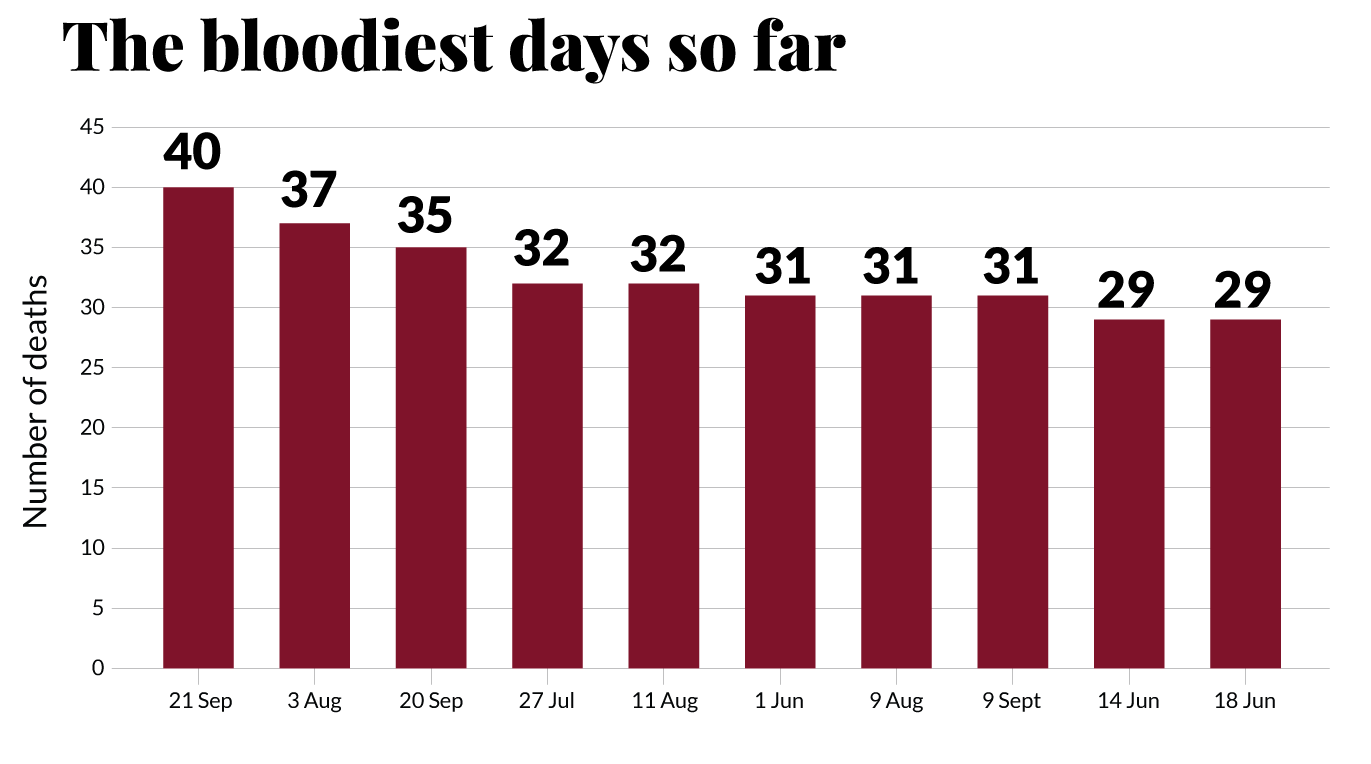
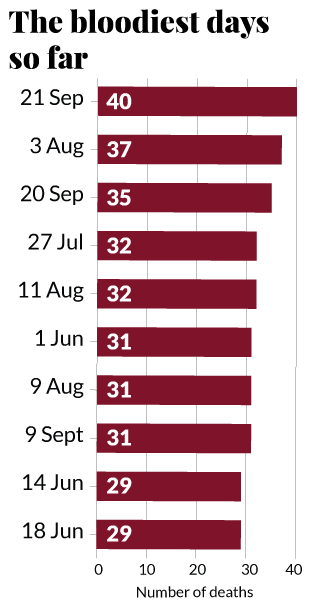
Among those killed on 21 September were 19 alleged drug traffickers in the Metropolitan Manila area. The Philippines news website the Philstar reported nine were killed in shootouts with police during a narcotics raid. The other ten were killed in vigilante attacks with one man fished out of a river.
On 3 August, 37 were killed. It was the second bloodiest day since May. A large number of the dead were shot by police during raids. Six henchmen believed to have been involved in a high-level drug-dealing operation in Albuera town, Leyte, were shot by police at a narcotics factory linked to a local politician.
On the same day, four accused drug dealers were shot by police in so-called "buy-bust operations" in Toledo City, Cebu. One of the dealers had been put on a kill list after he had promised to kill any police officer who interfered with his business.
The manner of the killings fall broadly into one of three categories. In a murky and violent world, alleged drug addicts and dealers are found dumped by roadsides with only signs around their necks identifying them as "drug user" or "drug pusher". These individuals are identified as having been killed in unknown circumstances.
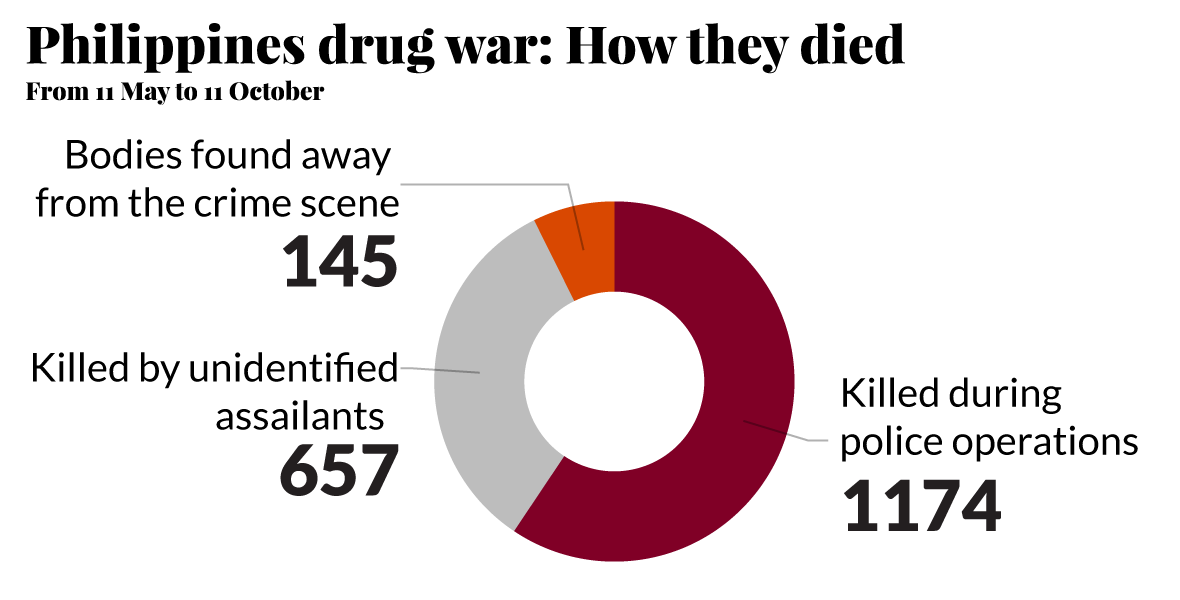
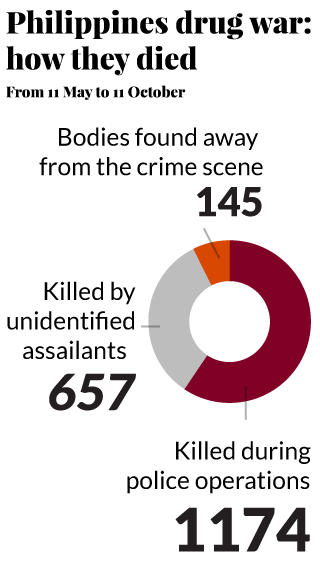
The other two categories comprise of those who died either at the hands of vigilantes or during police operations. Those recorded as having been killed by the police are said to have died in anti-drug operations which ended in shoot-outs. Those murdered by vigilantes were reported by witnesses, or their slayings were captured on CCTV.
© Copyright IBTimes 2024. All rights reserved.






